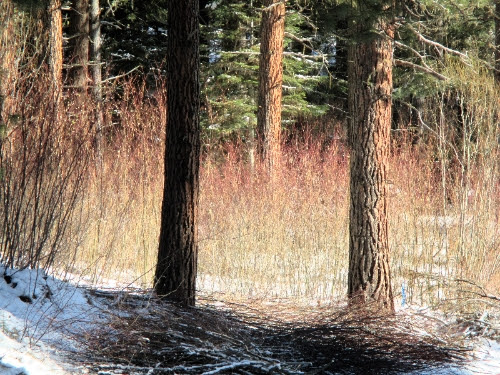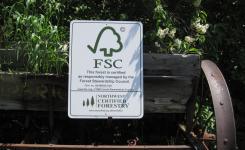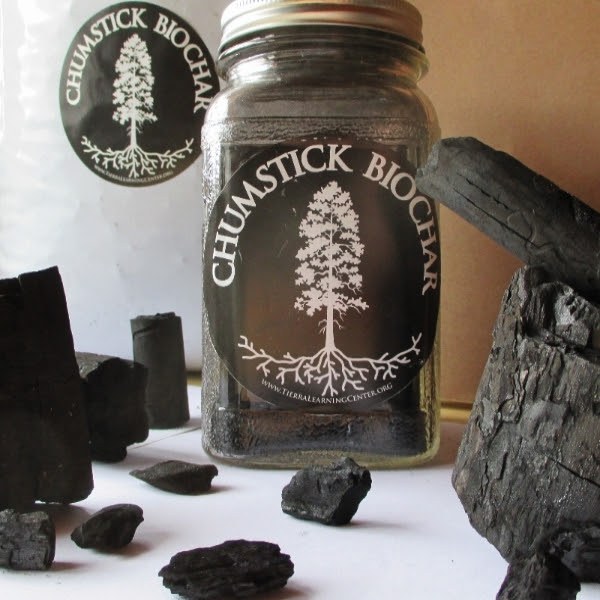Fostering Positive Growth in a Forest and a Community

Tierra Learning Center’s forest in Sunitsch Canyon
Leavenworth, WA
By: Christina Davis
The history of Sunitsch Canyon extends further into the past than the incorporation of Washington State. Mathias Sunitsch, originally from Austria, established his homestead on the land in 1888, then considered Washington Territory. Sunitsch’s barn, built in 1912, still stands on the property today. Although over a century has passed, a reverence for the land once held by an Austrian immigrant can still be felt in the present operations at Sunitsch Canyon and Tierra Learning Center.
Tierra Learning Center was established at Sunitsch Canyon in 2001 when Gracie Close purchased the property from the Snohomish Public Hospital. In 2008, the mission shifted from a non-profit retreat center to creating a community bound by inclusiveness, stewardship, and positive growth. Today, Tierra consists of several enterprises, the learning center, a retreat center, a preschool, housing for residents of all abilities, and an organic garden. Andrew Holm, Operations Officer for Sunitsch Canyon describes them as “five entities held together by a willingness to learn from and care for our local landscape and community”.
As the center grew to serve a wider population, the serious fire hazards intrinsic to the canyon’s geography also increased. The 250 acres of forested land contained overstocked timber stands and ground fuels and the steep canyon slopes makes for precarious escape routes. To address these issues, Sunitsch Canyon developed a forest stewardship plan in 2011. The plan recommended pre-commercial and commercial thinning of overstocked stands to enhance forest health and remove ladder fuels that intensify fires.
With the significant amount of foot traffic from community members at the preschool and guests at the retreat center, Andrew knew that their forestry work would be very visible to the pu blic. He inquired about Northwest Certified Forestry membership in 2011 and achieved FSC® certification for Sunitsch Canyon in 2012. His main objective for certification was to reassure visitors of the ecological motives behind the selective harvests that would soon begin. “The gate sign was in many ways the initial obvious appeal of certification for us,” Andrew says referring to the FSC® sign displayed on certified members’ forests. He also noted the benefit to commercial timber sales now that they are able to tap in to the FSC® premium timber market and the education and support from the larger NNRG community.
blic. He inquired about Northwest Certified Forestry membership in 2011 and achieved FSC® certification for Sunitsch Canyon in 2012. His main objective for certification was to reassure visitors of the ecological motives behind the selective harvests that would soon begin. “The gate sign was in many ways the initial obvious appeal of certification for us,” Andrew says referring to the FSC® sign displayed on certified members’ forests. He also noted the benefit to commercial timber sales now that they are able to tap in to the FSC® premium timber market and the education and support from the larger NNRG community.
Following the management activities outlined in the plan, Tierra has completed 80 acres of pre-commercial thinning for fuel reduction and forest health, which was funded by a cost-share grant from the Department of Natural Resources and the Chumstick Wildfire Stewardship Coalition. Watching the process of removing woody material from the forest, Andrew had the thought: “There is so much biomass that you are pulling out. This is such a great resource; is there something else you can do instead of just wasting it?” This led Andrew and his colleagues to begin experimenting with biochar. “It’s pretty much just charcoal, we’re making charcoal,” Andrew says. “Our biochar retort is pretty basic technology that’s been optimized to reduce emissions.” Biochar is the product of burning biomass like woody debris leftover from harvests- in the absence of oxygen, a process called pyrolysis. We’re heating the wood to a point where the volatile gasses are expelled from the wood to be reignited leaving 70% of the carbon behind. The resulting charcoal is fine-grained and porous which promotes water and nutrient retention, properties that make it an effective soil amendment. Furthering the synergy of the operations at Tierra, the organic garden and grounds have begun to use the forest’s biochar with promising results. Preliminary results are mostly anecdotal at this time, but encouraging enough to keep working with the char in the canyon’s soil. NNRG Executive Director Dan Stonington has also used Chumstick Biochar in his home garden to get his plants off to a good start.
Another benefit of biochar is carbon sequestration. The carbon in uncharred organic matter is fairly unstable and quickly escapes into the atmosphere. After pyrolysis, the remaining carbon in bio char is highly resistant to degradation. When it is buried to enhance soils, the system becomes carbon negative suggesting that this simple process may be able to play some role in the future of climate change.
Chumstick Biochar is a central piece of the Tierra Forestry program but production is still heavily labor intensive and still on a small-scale. The team sells jars, as well as 5 and 10 gallon bags of it at local farmers markets and those interested in purchasing are encouraged to contact Andrew. While they are hoping to expand sales, Andrew admits he is content just keeping the char at Tierra. “For the time being we need to return most of the resource to the land here,” he says.
The next phase of activity for the forest is implementing a 15 year commercial harvest plan for the whole property. “We’re looking at it as a continuous selective commercial harvest,” Andrew says. They also plan to utilize roads developed for thinning work for greater recreational and fire break access. As this occurs, guests and visitors will be able to enjoy the healthy, working forest behind the FSC® gate sign and learn more about the conservation efforts of the Tierra Forestry program.
To inquire about Chumstick Biochar email andrew@tierralearningcenter.org
For more info visit tierralearningcenter.org


Leave a Reply